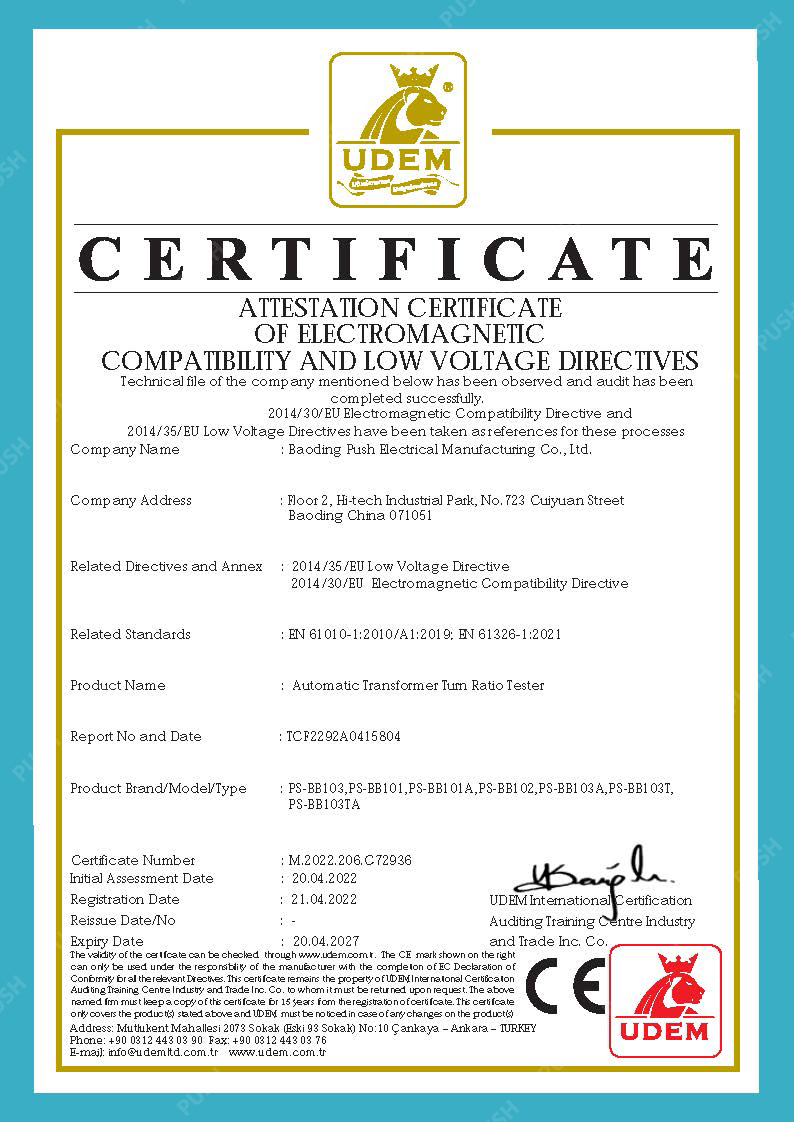 English
English


Exploring the Effects of Interfacial Tension on Transformer Oil Performance and Longevity
Interfacial Tension in Transformer Oil Importance and Impact
Transformer oil plays a critical role in the effective and safe operation of power transformers. It serves multiple functions insulating electrical components, dissipating heat, and preventing corrosion and oxidation. Among various physicochemical properties of transformer oil, interfacial tension is a key parameter that significantly influences the performance and longevity of transformer systems.
Interfacial tension, defined as the force acting at the interface between two immiscible liquids (in this case, transformer oil and water), is an important indicator of the oil's purity and its ability to perform effectively under operational conditions. The presence of water in transformer oil is inevitable due to factors such as moisture ingress during cooling, condensation, or failures in maintenance protocols. Elevated levels of dissolved water can lead to serious issues like partial discharge activity, which might accelerate insulation breakdown.
The interfacial tension of transformer oil can provide valuable insights into the state of the oil and its contamination level. A higher interfacial tension generally indicates a better-quality oil with less polar impurities and lower levels of moisture. Conversely, a significant reduction in interfacial tension can signal the presence of free water or polar contaminants, suggesting that the oil has degraded or become compromised. Regular monitoring of interfacial tension, therefore, serves as an effective method for evaluating the condition of transformer oil and anticipating potential failures.
interfacial tension in transformer oil

Moreover, interfacial tension affects the physical attributes of the oil, such as its ability to separate from water and maintain its insulating properties. Transformer oils with poor interfacial characteristics may not adequately repel moisture, leading to the formation of water droplets that can accompany dendrite formation and electrical tracking along insulation surfaces. This, in turn, poses risks of electrical failure within the transformer.
The characterization of interfacial tension is also vital during oil regeneration and treatment processes. In cases where transformer oil is found to be contaminated, knowing the interfacial tension can help determine the most suitable chemical or mechanical methods for purification. Techniques such as vacuum processing, adsorption, and chemical filtration aim to restore the oil’s properties, and their effectiveness can be judged by subsequent changes in interfacial tension.
In practical terms, routine testing for interfacial tension, along with other key parameters like dielectric strength, moisture content, and acidity, should be incorporated into a comprehensive maintenance regime. Utilizing advancements in measurement technology, companies can conduct real-time monitoring of interfacial tension, allowing for quicker responses to contaminated conditions and prolonged transformer life.
In conclusion, interfacial tension is not just a technical parameter but a vital metric reflecting the overall integrity of transformer oil. By understanding and managing interfacial tension alongside other properties, utility companies can enhance transformer reliability and reduce the risk of outages or catastrophic failures due to oil degradation. As the energy sector continues to evolve, maintaining the quality of transformer oil through diligent monitoring and advanced treatment will be key for the sustainable operation of electrical infrastructures worldwide.
-
Differences between open cup flash point tester and closed cup flash point testerNewsOct.31,2024
-
The Reliable Load Tap ChangerNewsOct.23,2024
-
The Essential Guide to Hipot TestersNewsOct.23,2024
-
The Digital Insulation TesterNewsOct.23,2024
-
The Best Earth Loop Impedance Tester for SaleNewsOct.23,2024
-
Tan Delta Tester--The Essential Tool for Electrical Insulation TestingNewsOct.23,2024





